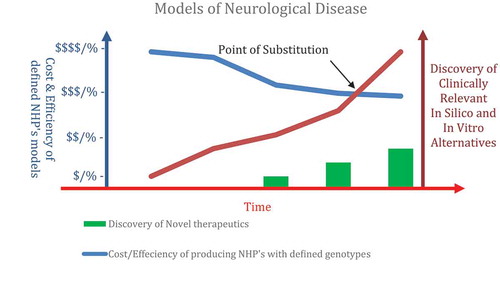Figures & data
Figure 1. Non-human primate (NHP) models with a defined genotype would advance our knowledge of the genetic keystones of disease and aid the development of novel therapies for humans. However, the high cost and low efficiency of the NHP model coupled with the emergence of novel alternative technologies that accurately account for genotype variations will ultimately converge in terms of clinical outcomes. The combination of unique NHP’s as preclinical test models in combination with iPSCs and genomics studies may well be considerably more efficient for the delivery of reliable neurological therapeutics. The societal and research value of NHP studies in terms of neurological discoveries will continue to be judged against the advent of alternative technologies that offer similar outcomes without the use of animal models (Point of Substitution).

